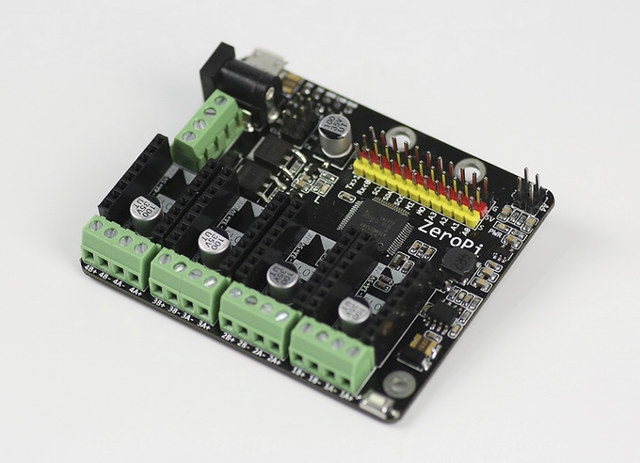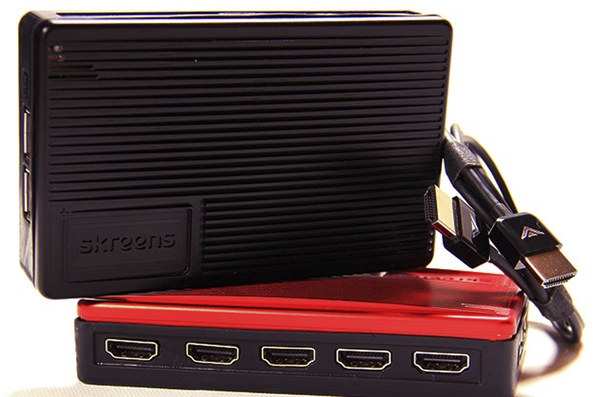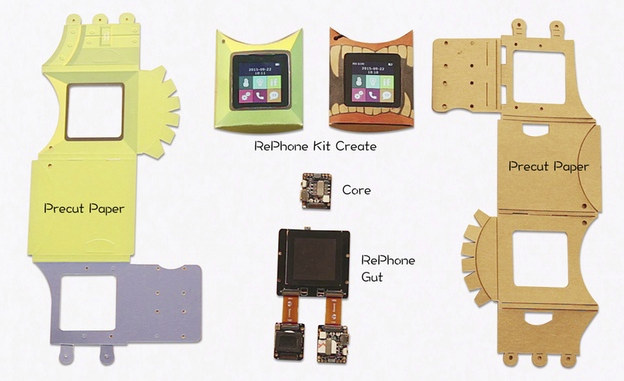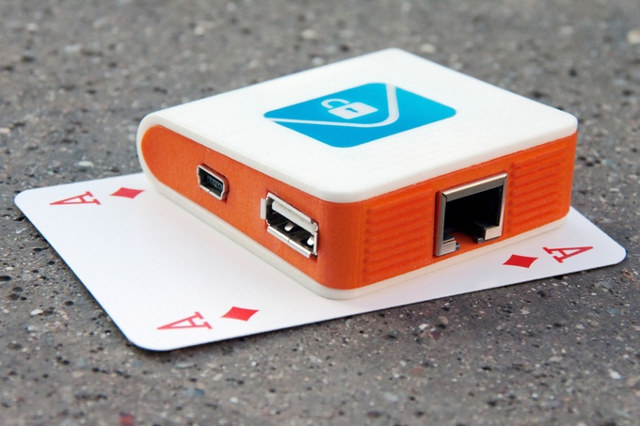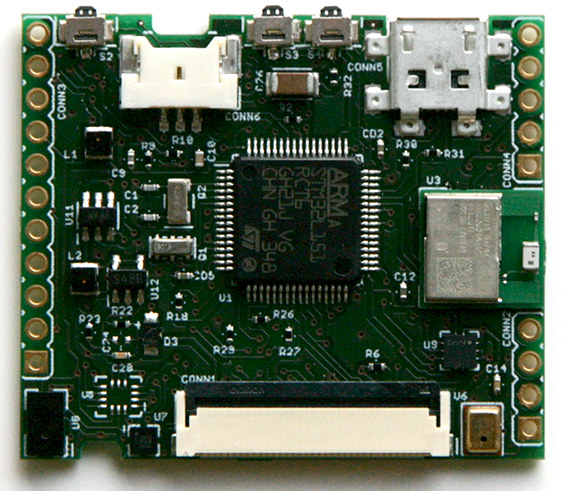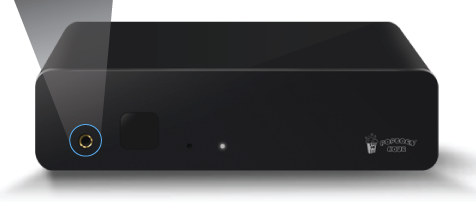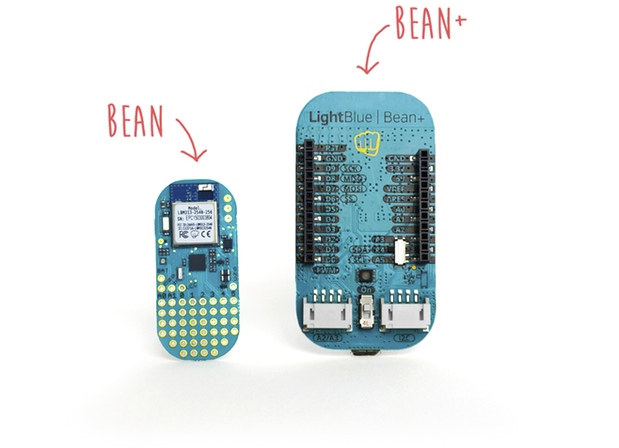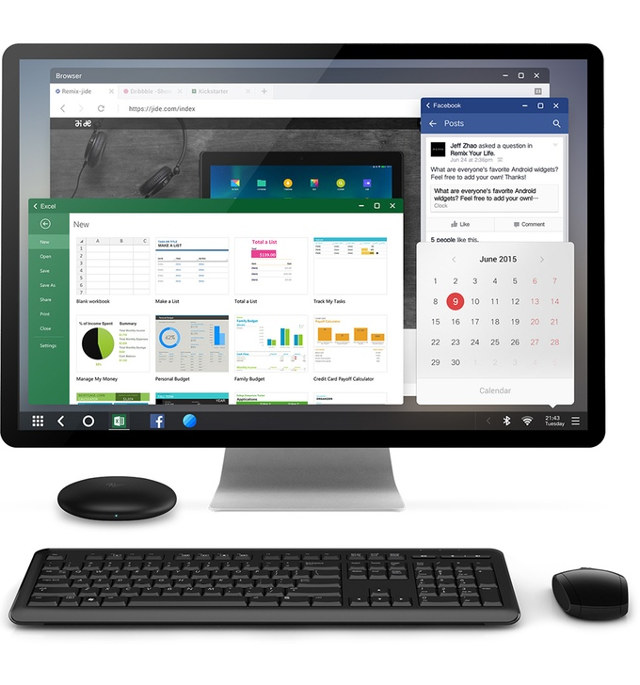Pi boards keep on coming… As soon as I finished writing about Roseapple Pi board, yet another one popped out on my twitter feed… But that one is of a different kind, as it won’t run Linux, but instead the board is powered by an Atmel SAMD21 Cortex M0+ micro-controller, and can support lots of electric motors including up to 11 micro servos and 8 DC motors – or 4 stepper motors – simultaneously. ZeroPi board specifications: MCU – Atmel SAMD21J18 ARM Cortex M0+ @ 48 MHz with 32 SRAM and 256KB flash I/O pins via 33-pin header, 4-pin temperature sensor, and 10-pin Raspberry Pi header 35 GPIOs 4x 12-bit ADC channels 1x 10-bit DAC 2x UART 2-channel temperature sensor interface DC current per I/O pin- 7mA DC / Stepper Motor control – 4x 4-channel SLOT interface compatible with common parts such as DRV8825 or A4988 Stepper motor driver and […]
Skreens are Configurable Picture-in-Picture HDMI Splitters (Crowdfunding)
Some HDMI splitters support picture-in-picture (PiP) to display of the video input full screen, and the others in small windows, and the ones I checked just cost under $30 on Amazon here, there, and over there. People who only use them as splitters are satisfied, but the ones who tried the PiP function are disappointed, as the other inputs, usually 3, are only shown in small windows on one of the corner of the TV, and not that useful. If you want more customizable PiP, Skreens could be what you are looking for, as the HDMI inputs can be resized and positioned via a mobile app. There are basically two models named by their number of inputs: NexusTwo, and NexusFour, with Pro versions bringing the total to 4 models. Skreens NexusTwo specifications: Chip(s) – Xilinx Kintex-7 Field Programmable Gate array with Dual ARM Cortex-A9 @ >1 GHz with NEON (Over […]
RePhone Kit Create is a DIY Phone and Cellular Development Kit (Crowdfunding)
Seeed Studio has design a modular and open source phone it calls RePhone Kit Create. The kit allows you, or/and your kid(s), to assemble their own phone based on building blocks including a 2G or 3G core module, a touchscreen display module, an audio module, and pre-cut, seawable, washable, and easily drawable Kraft paper to make the case. The kit can also be used for IoT applications using cellular and Bluetooth connectivity, and extra Xadow modules GPS, NFC, motion sensors, camera and more.. Two cellular “core” module can be used: RePhone GSM + BLE module with the “world’s smallest System-on-Chip (SOC) for Wearables and Internet Of Things”, GSM, GPRS and Bluetooth 2.1 and 4.0 support. RePhone Core Module 3G with a “powerful microcontroller”,a standard Xadow interface (USB, GPIO, I2C, SPI, UART, EINT), support for speaker, two microphones and a headset, a Nano SIM, and support for HSPA/WCDMA:850/1900 and GPRS/EDGE:850/1900. Voltage: […]
Own-Mailbox is a Tiny, Secure, and Open Source Hardware Mail Server (Crowdfunding)
Email encryption has been around for a while, but virtually nobody uses it, because it’s quite complex to setup, and your recipients email clients, apps or browsers must also support encryption. Revolutek aims to simplify the setup and usage of encrypted email with their “Own-Mailbox” based on open source hardware and software technology. The hardware solution could have been based on the Raspberry Pi board in theory, but the popular board requires a closed source binary to boot, documentation about part of the hardware is lacking, and once the enclosure, and required accessories are included the price would have been higher. So instead they decided to design their own hardware based on an Allwinner processor: SoC – Allwinner A13 Cortex A8 processor @ 1GHz System Memory – 256 MB RAM Storage – (micro?) SD card slot with 16GB card included Connectivity – 10/100M Ethernet (Lan9500A controller) USB – USB host […]
LimiFrog is a Bluetooth 4.1 Wearables Devkit Based on STM32L4 with Lots of Sensors (Crowdfunding)
LimitFrog is a tiny board powered by STMicro STM32-L4 microcontroller with Bluetooth 4.1 connectivity, plenty of sensors, and that can run code bare metal as well as RiOT real-time operating system. LimiFrog specifications: MCU – STMicro STM32-L4 ARM Cortex M4 micro-controller @ 80 MHz with DSP, 512KB flash, 128KB RAM External storage – 8MB serial flash for data that supports FAT32 file system Display – 160×128 RGB565 OLED display Connectivity – Bluetooth 4.1 (Panasonic PAN1740) Sensors (Follow this link for datasheets of most components) Pressure, altitude & temperature (LPS25H) 3-axis accelerometer, 3-axis gyroscope (LSM6DS3) 3-axis magnetometer (LIS3MDL) Ambient light, proximity and distance (VL6180X) Ambient sound (SPU0414H5H) USB – micro USB port for power and programming Expansions – 11-pin (through holes) providing access to SPI, I2C, CAN, PWM, GPIOs, ADC, DAC, Analog out, and power signals (3V out GND) Battery – 500 mAh (hours to weeks of battery life depending on […]
Popcorn Hour A-500 PRO High-End Media Player is Powered by Sigma Designs SMP8758 SoC (Crowdfunding)
CloudMedia, previously known as Syabas, has been in the Linux media player business for many years, having developed various product based on Sigma Designs secure media processor. Popcorn Hour A-500 PRO is their latest media player, which the company claims have high-end audio and video quality thanks to an ESS SABRE Audio DAC, XLR connectors, and Sigma Designs SMP8758 dual core Cortex A9 processor and its VXP engine. Popcorn Hour A-500 PRO specifications: SoC – Sigma Designs SMP8758 ARM Cortex A9 processor @ 1.2 GHz with ARM Mali-400 GPU and VXP image processing engine System Memory – 2048 MB DDR3 Storage – NAND Flash for firmware, 1x SD card reader, internal SATA bay Video Output – HDMI up to 3840×2160 @ 30 Hz Audio Output Digital – HDMI, optical S/PDIF, and coaxial S/PDIF Analog – Stereo RCA jacks, XLR connectors, and headphones Audio DAC – ESS SABRE Audio DAC ES9018K2M […]
LightBlue Bean+ Bluetooth LE Board is Programmed Wirelessly, Lasts One Year on a Charge (Crowdfunding)
Punch Through launched a crowdfunding campaign back in 2013 for LightBlue Cortado an innovative Arduino compatible BLE board that can only be programmed wirelessly over Bluetooth Smart. The board has since then been renamed to LightBlue Bean, and the company allegedly delivered rewards to backers on time, a rarity in the crowdfunding world. LightBlue Bean+, the second version of the board, is larger with solderless headers, supports more Bluetooth LE capabilities such as MIDI, and includes a battery. The project launched on Kickstarter yesterday, and already raised over $40,000, surpassing the $30,000 funding target set by the team. LightBlue Bean+ board specifications: MCU – Info N/A (Bean has an Atmel ATmega328P @ 8MHz with 32KB Flash, 1KB EEPROM, 2KB SRAM) Bluetooth Bluetooth LE with support for 5 new capabilities: beacon, MIDI, HID, ANCS and observer role. Hardware module undisclosed (Bean has an LBM313 Module with Texas Instruments CC2540) Up to 400 […]
Remix Mini Android Mini PC Offers a Better Desktop Experience (Crowdfunding)
Android mini PC are great to consume content, but when I tried to blog with one, I found many shortcomings which made it not such as good user experience, and writing articles on an Android mini PC everyday, it would seriously decrease my productivity. That’s probably why Chinese start-up Jide Tech decided to work on Remix OS, based on Android 5.0 but with customizations for a better desktop experience including multitasking support, resizable windows, shortcuts support, a taskbar, and more. The company has now launched a Kickstarter campaign for a low cost mini PC powered by Allwinner A64 and Remix OS. They called it Remix Mini, and dubbed it the “First True Android mini PC”. Two versions are available, one with 1GB RAM + 8GB storage, and one with 2GB + 16GB storage. Specifications: SoC – Allwinner H64 quad core Cortex A53 processor @ 1.2 GHz System Memory – 1 […]


